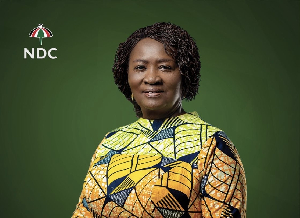 Dr Ernest Addison, Governor, Bank of Ghana
Dr Ernest Addison, Governor, Bank of Ghana
The Bank of Ghana’s Monetary Policy Committee has started its 95th regular meeting to decide on the benchmark Monetary Policy Rate for the next two months. The meeting will end on Friday and the results of their deliberations will be revealed on Monday.
The private sector is worried about this and for good reason; while the MPR no longer directly determines lending rates since banks lend short term monies to themselves rather than resort to the central bank as the lender of last resort, the direction of change of the MPR – whether up, down or stable – guides banks as to which way to move their own rates.
And after months of aggressive monetary easing by the BoG to stimulate economic activity in the face of the dampening effects of the COVID-19 pandemic, the central bank is now considering tightening monetary policy to curb inflation which has risen above its target band of 8 percent plus or minus 2 percent over the past few months.
Indeed the BoG itself, in its most recent Inflation Outlook, which instructively is prepared by the Bank’s research department, which is represented on the MPC – suggests an increase in the MPR since it reckons that inflation will expectedly remain above the target band until the second quarter of next year. As an inflation targeting institution, the BoG will be sorely tempted to heed this advice from within its own ranks.
But we believe this should not be done. This newspaper recommends that the MPR should be retained at the current 14.5 percent for the next two months.
This is for several reasons.
Firstly, the latest inflation data released by the Ghana Statistical Service last week, covering August reveals a sharp drop in headline inflation from 11.4 percent in July to 10.5 percent in August.
This is instructive in that the current surge in inflation is wholly attributable to relatively high food inflation, itself largely the result of the supply chain disruptions brought about by the eruption of coronavirus and also the panicked stocking of foodstuff by households at the advent of socio-economic restrictions imposed by government.
Now however, these are fading away and this year’s harvest is increasing supply and thus stemming domestic food inflation.
Secondly, the restoration of economic growth must now be the absolute priority ahead of curbing inflation, even for the inflation targeting BoG because of the sheer depth of the economic contraction suffered during the second quarter of the year, of 3.4 percent.
Although the phased removal of the socio-economic restrictions that instigated the slump will ensure it is not repeated for the rest of the year, the economy has a lots of ground to make up even to achieve marginal full year growth.
Actually, although the BoG claims to be an inflation targeting institution, the quantitative considerations that go into deciding on what to do with the MPR every two months considers both inflation and growth in equal measure.
This means that if it goes with its usual computations, it could likely keep the MPR at 14.5 percent this time around. But our worry is that it could adjust those computations – or the way it interpretes its usual computations – out of its urge to ensure that inflation keeps falling quickly.
This is not necessary. While we recognize the impending inflationary pressures from the upcoming general election and end of year consumerist spending, we are confident that the expected fall in food inflation over the coming month will keep overall inflation on a downward trend.
But even if it does not, we believe it would be better to live with inflation slightly above the target band for a few more months than take the risk of allowing any further macro-economic contraction.
The incumbent administration came into office on the promise of replacing erstwhile International Monetary Fund instigated demand management with supply side economics and until the outbreak of COVID-19 this was working well with regards to economic performance. An increase in the MPR now, under the current circumstances would amount to a return to demand management and all its shortcomings.
- Financial sector clean-up: 900 people dead, pay us by June 30 - GCFM customers to government
- Bank of Ghana governor denies calling NDC MPs hooligans
- Ghana to become top destination for fintech investments – BoG
- Here is why BoG suspended forex trading licences of GT Bank, FBN Bank
- Bank of Ghana, Development Bank Ghana to launch 3i Africa Summit in Accra
- Read all related articles












